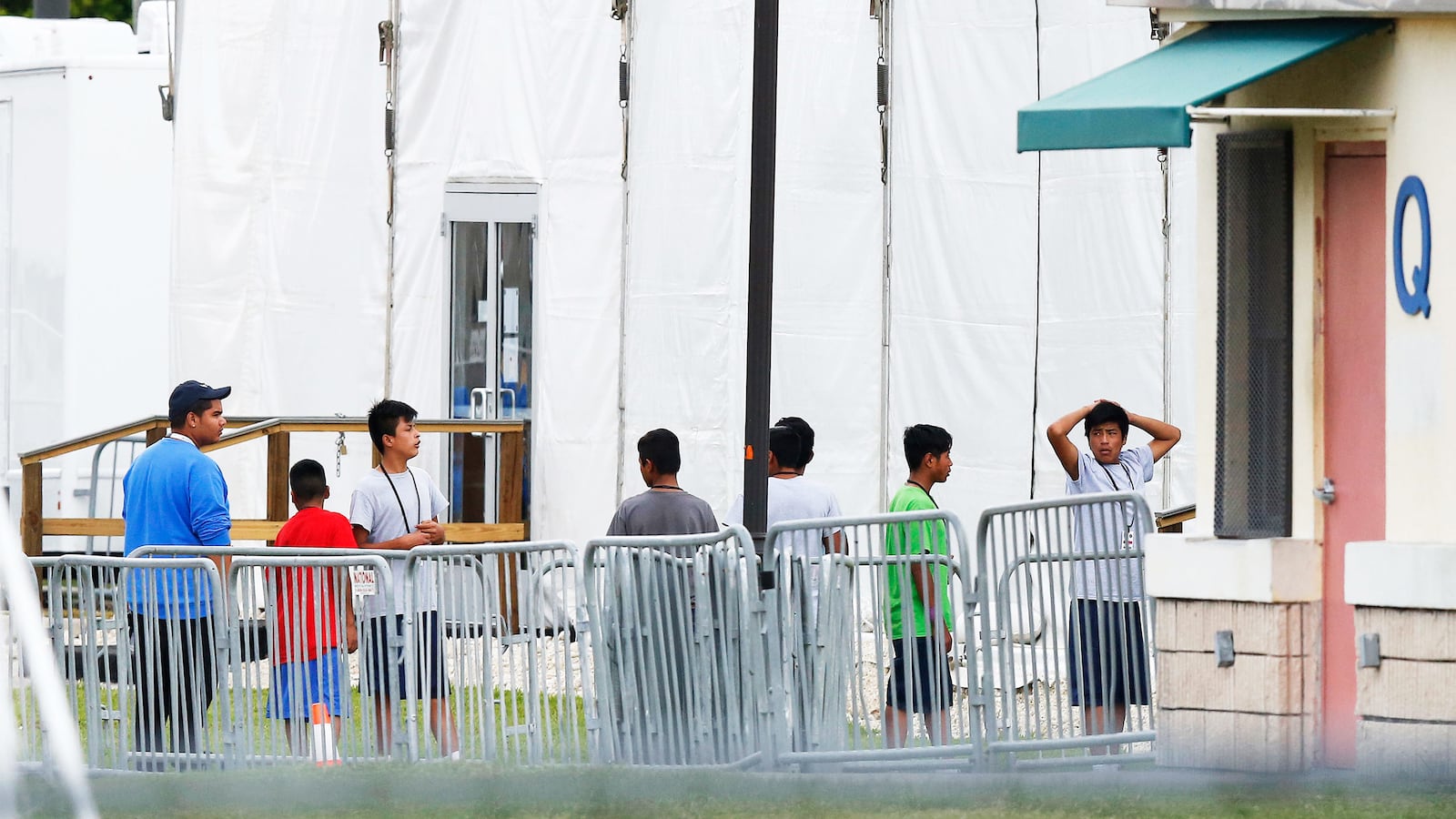As news broke on the reportedly horrific conditions at a Texas detention center holding migrant children, President Trump did what he normally does in times of crisis and public-relations hellscapes: He monitored the media and political reactions via his White House TV and the DVR device he dubs his “super TiVo.”
And in the days since the treatment of small children at this detention facility became major national news, the president wanted to make one thing clear to his subordinates, though his focus was not at all about ameliorating appalling conditions. Trump has repeatedly told advisers and senior aides that, no matter how great the public outrage toward his administration, his lieutenants were to stick to a simple strategy of blaming Democrats and Trump’s predecessor, Barack Obama, according to two people with knowledge of the exchanges.
In the end for Trump, the dire situation was a mere messaging problem.
The strategy was a practical Xerox of the president’s approach to other immigration scandals of the Trump era, such as the brutal, widely condemned family-separation policy. When the president and his team don’t want to own the negative coverage and political backlash to the treatment of migrants, asylum-seekers, or undocumented immigrants—but also want to continue draconian policies nonetheless—they frequently revert to trashing the Democrats as the real culprits.
“Well, they’re better than, much better than Obama… The conditions are much better than they were under President Obama,” Trump alleged during an interview with The Hill on Monday, when asked about Rep. Alexandria Ocasio-Cortez’s characterization that he was presiding over an American “concentration camp.”
On Sunday, Vice President Mike Pence told CNN host Jake Tapper that it was the “Democrats in Congress” who had “refused to expand the bed space and the capacity for us to detain people at our borders,” when pressed on detention-center conditions. “It is one of the reasons why we continue to call on Congress to give [the Department of Homeland Security], Customs and Border Protection additional resources at the border.” This led to a somewhat tense back-and-forth, with Tapper arguing that funds already exist to provide these children with blankets and hygiene products.
The Department of Homeland Security has for more than a year at times relied on its advisory council for suggestions on how to better serve the children and families detained in border facilities. A subcommittee of the council traveled to the border facilities in Texas over the last five months and drew up a report for former Secretary Kirstjen Nielsen, reiterating the dire need for resources handling children. One council member said the visits illuminated the overcrowding of facilities and the need for better transportation services for individuals crossing the border and being placed in more permanent shelters.
“[Customs and Border Patrol] personnel are... tending to the daily needs of thousands of illegal migrants who CBP has already processed but is left holding for days and sometimes weeks in confinement space that was built decades ago and designed to confine only a fraction of these illegal migrants for hours, not days or weeks, and certainly not intended to confine tender age children,” the report said.
The advisory council has not been in contact with the DHS secretary’s office over the last week, according to council members, and the head of the subcommittee that focuses on children and families has been on vacation, according to sources affiliated with the council, which consists of professional volunteers.
And the conditions in the detention centers are often abysmal. Nearly 300 children were temporarily removed from the Clint detention facility in Texas after media reports alleged horrifying conditions within: sick children whose clothes were covered in mucus, children who had only brushed their teeth a single time since being detained, and children sleeping on concrete floors. Many of those children have since been returned to the Clint facility.
The increasingly dire conditions in detention facilities across the U.S. southern border are part and parcel of the Trump administration’s immigration agenda. The increasing scarcity of resources at Border Patrol stations and ICE detention facilities, from access to adequate medical care to beds and bathrooms with potable water, are the consequences of an immigration system straining to accommodate an increasing number of detainees—as well as, advocates posit, a purposeful warning to would-be migrants in Central America thinking of heading north.
“The Trump administration’s focus, almost since its inception, has been deterrence of asylum-seekers,” said Melissa Crow, a senior supervising attorney at the Southern Poverty Law Center. According to Crow, members of the Trump administration have determined that if detention facilities were better staffed and better maintained, “then more people would come.”
“The constraints are sort of artificial,” Crow said.
Instability at the Department of Homeland Security—due in no small part to pressure from the White House to enact an unpopular, occasionally contradictory agenda—has likely played a part in bureaucratic difficulties.
Within the past two two months, the Department of Homeland Security has seen the resignations of Nielsen, Acting ICE Director Ron Vitiello, Acting Deputy Secretary Claire Grady, U.S. Citizenship and Immigration Services Director Lee Francis Cissna, and, as of Tuesday morning, Acting Commissioner of Customs and Border Protection John Sanders. Later on Tuesday, it was announced that Mark Morgan, acting director of ICE, would be named as Sanders’ successor.
But at the heart of the worsening conditions in detention centers, advocates for immigrants in the legal system said, is a lack of concern for the children and families being held within them.
“We have billions of dollars in appropriations meant to address the humanitarian crisis on the border,” said Angelica Salas, executive director of the Coalition for Humane Immigrant Rights of Los Angeles. “Why do we still have children who are sleeping on floors?”









